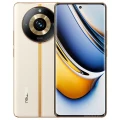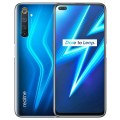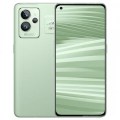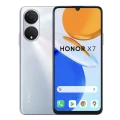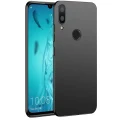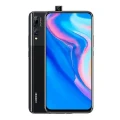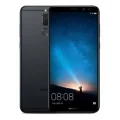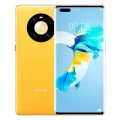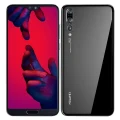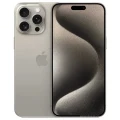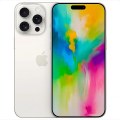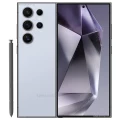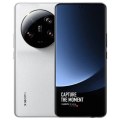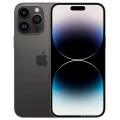- Awesome page
- Latest Mobile
- Smartphones
- Realme 2 Pro
Realme 2 Pro
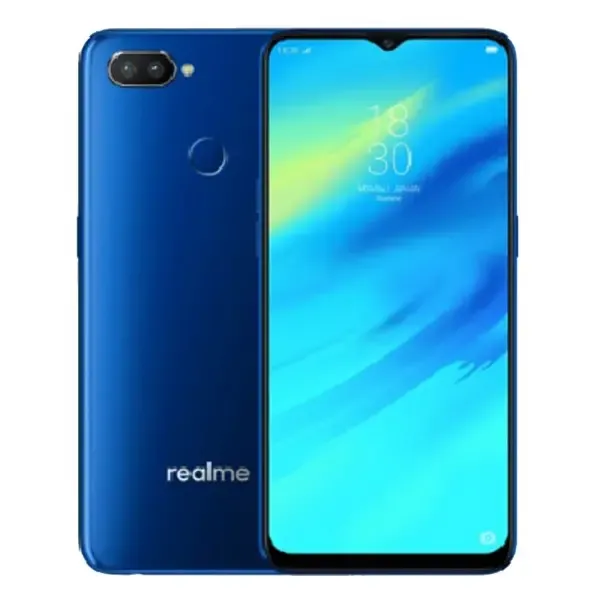


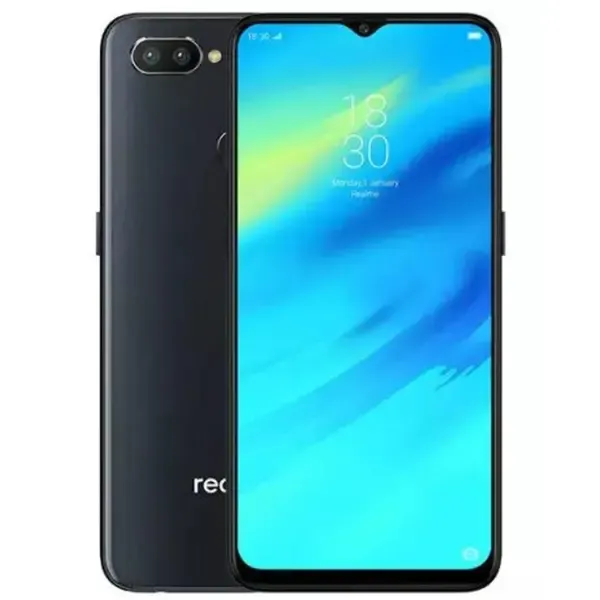
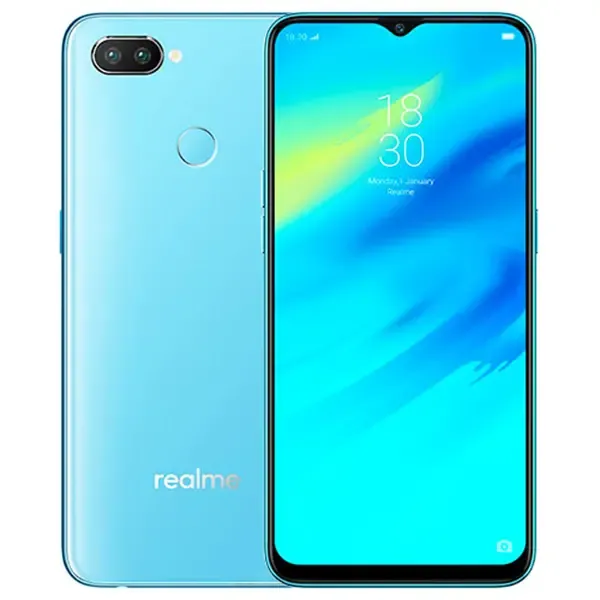
Realme 2 Pro Price in Bangladesh
The Realme 2 Pro price in Bangladesh is BDT 18,500. It features a 6.3-inch IPS LCD display with a resolution of 1080 x 2340 pixels. Powered by a Qualcomm Snapdragon 450 processor, it offers variants with 4GB, 6GB, or 8GB of RAM and 64GB or 128GB of internal storage. The device has a dual rear camera setup of 16 MP + 2 MP and a 16 MP front camera. It includes features like a fingerprint sensor and a 3500mAh battery for reliable performance.
Specifications
General
| Model | Realme 2 Pro |
| Status | Available |
| Official price | 8GGB 128GB ৳18500 / 8GGB 256GB ৳29990 |
| Unofficial price | 3GB 32GB ৳13000 / 4GB 64GB ৳13500 |
Design
| Dimensions | 156.7 x 74 x 8.5 mm (6.17 x 2.91 x 0.33 in) |
| Weight | 174 g (6.14 oz) |
| Colors |
Black, Deep Blue, Light Blue |
Network
| Technology | GSM / HSPA / LTE |
| 2G Network |
GSM 850 / 900 / 1800 / 1900 - SIM 1 & SIM 2 |
| 3G Network |
HSDPA 850 / 900 / 2100 |
| 4G Network |
LTE band 1(2100), 3(1800), 5(850), 7(2600), 8(900), 20(800), 38(2600), 40(2300), 41(2500) - Global LTE band 1(2100), 3(1800), 5(850), 8(900), 34(2000), 38(2600), 40(2300), 41(2500) - India |
| GPRS <strong>GPRS</strong> (General Packet Radio Service) is a packet oriented mobile data service on the 2G and 3G cellular communication system's global system for mobile communications (GSM), Generally, GPRS is used for the purpose of wireless data transfer, such as sharing pictures and videos or browsing the Internet via a mobile phone connection. | |
| EDGE <strong>EDGE</strong> (Enhanced Data GSM Environment) is a wireless network technology generally considered the next step in the 2G network offers data transfer rates up to four times faster than ordinary GSM networks, Generally, EDGE is used for the purpose of wireless data transfer, such as sharing pictures and videos or browsing the Internet via a mobile phone connection. | |
| Speed | HSPA 42.2/5.76 Mbps, LTE-A (2CA) Cat6 300/50 Mbps |
Display
| Display Type <strong>Display Technology => </strong> A number of display technologies and types used in mobile phones => TFT (Thin Film Transistor), IPS (In-Place Switching), OLED (Organic Light Emitting Diode), AMOLED (Active-Matrix Organic Light-Emitting Diode), Super AMOLED (an even advanced version of AMOLED), Resistive Touchscreen (Resistive touchscreens contain two layer of conductive material with a very small gap between them which acts as a resistance), Capacitive Touchsceen (Capacitive touchscreen technology consists of a layer of glass coated with a transparent conductor) | IPS LCD capacitive touchscreen, 16M colors |
| Size | 6.3 inches, 97.4 cm2 (~84.0% screen-to-body ratio) |
| Resolution | 1080 x 2340 pixels, 19.5:9 ratio (~409 ppi density) |
| Features |
MP4/H.264/FLAC player MP3/eAAC+/WAV player Document viewer Photo viewer/editor Charging 2A/5V 10W |
Camera
Main camera
| Camera Setup | Dual |
| Primary <strong>Camera</strong> is able to capture photographs and usually videos, The most important characteristics of a camera are the resolution (measured in megapixels), lens focus type (fixed or automatic), higher megapixel cameras are known to capture higher quality photos, but not always a good measurement of the photos quality. |
16 MP, f/1.7, 1/2.8&quot;, 1.12µm, PDAF 2 MP, depth sensor |
| Features |
LED flash, HDR, panorama |
| Video | 1080p@30fps |
Selfie camera
| Camera Setup | Single |
| Primary <strong>Camera</strong> is able to capture photographs and usually videos, The most important characteristics of a camera are the resolution (measured in megapixels), lens focus type (fixed or automatic), higher megapixel cameras are known to capture higher quality photos, but not always a good measurement of the photos quality. |
16 MP, f/2.0 |
Hardware
| Chipset <strong>Chipset</strong> is a group of integrated circuits designed to perform one or a more dedicated functions, often with real time computing constraints, Popular smartphones are equipped with more advanced embedded chipsets that can do many different tasks depending on their programming. | Qualcomm SDM660 Snapdragon 660 (14 nm) |
| CPU <strong>CPU</strong> (Central Processing Unit) mostly known as processors, CPU processes instructions in order to carry out certain functions that make your device operate properly. Processors are often described as the brain of computers, smartphones and tablets, Smartphones and tablets rely on processors to carry out their every task, Processors are an incredibly important factor in selecting any type of computing device, including your smartphone. | Octa-core (4x2.0 GHz Kryo 260 & 4x1.8 GHz Kryo 260) |
| GPU <strong>GPU</strong> (Graphics Processing Unit) is a single-chip processor designed to rapidly manipulate and alter memory to accelerate the creation of images in a frame buffer intended for output to a display, This includes things such as lighting effects, object transformations, and 3D motion. | Adreno 512 |
| RAM (Memory) <strong>RAM</strong> (Random Access Memory) is a type of computer memory that can be accessed randomly, any byte of memory can be accessed without touching the preceding bytes that allows information to be stored and accessed quickly from random locations. RAM is the most common type of memory found in computer systems, smartphones, tablets and other electronic devices. | 8/4/6 GB RAM |
| Internal Storage <strong>Internal Storage</strong> is a data storage space (flash memory) mostly used in smartphones, tablets and other electronic devices where operating system, apps, music, photos, videos, files and other user data Is stored. | 128 GB or 64 GB |
| Sensors <strong>Sensors</strong> are electronic components that detects and responds to some type of input from the physical environment. The specific input could be light, heat, motion, moisture, pressure and location, The output is generally a signal that is converted to use in computing systems, a location sensor, such as a GPS receiver is able to detect current location of your electronic device. |
Fingerprint - (rear-mounted), accelerometer, gyro, proximity, compass |
Connectivity
| Bluetooth <strong>Bluetooth</strong> is a wireless communications technology for exchanging data between mobile phones, headsets, computers and other network devices over short distances without wires, Bluetooth technology was primarily designed to support simple wireless networking of personal consumer devices. | 5.0, A2DP, LE |
| Infrared <strong>Infrared</strong> connectivity is an old wireless technology used to connect two electronic devices. It uses a beam of infrared light to transmit information and so requires direct line of sight and operates only at close range. | |
| USB | microUSB 2.0, USB On-The-Go |
| GPS <strong>GPS</strong> The Global Positioning System is a satellite-based radio navigation system, GPS permits users to determine their position, velocity and the time 24 hours a day, in all weather, anywhere in the world, In order to locate your position, your device or GPS receiver must have a clear view of the sky. | Yes, with A-GPS |
| NFC <strong>NFC</strong> (Near field communication) is a set of standards for smartphones and similar devices to establish peer-to-peer radio communications with each other by touching them together or bringing them into proximity, usually no more than a few inches. |
Battery
| Battery Type <strong>Battery Type => </strong> Cell phones run on various kinds of batteries depending on the manufacturer, phone size or shape and features. There are basically four types of cell phone batteries => Lithium Polymer, Lithium Ion, Nickel Metal Hydride and Nickel Cadmium. | Non-Removable Li-Po |
| Capacity <strong>Battery Capacity</strong> is a measure (typically in Amp-hr) of the charge stored by the battery, and is determined by the mass of active material contained in the battery. The battery capacity represents the maximum amount of energy that can be extracted from the battery under certain conditions. | 3500 mAh battery |
Realme 2 Pro Review: An Affordable Power Performer
The Realme 2 Pro makes a strong impression in the crowded budget smartphone market by combining affordability and solid performance. With a starting price of only BDT 18,500, it grabs your attention by offering features like a vibrant Full HD+ display, a dual-camera setup, generous RAM options, and a sleek design. But how does it hold up in real-world usage? Here’s a detailed breakdown of its design, performance, cameras, and more to help you decide if it’s worth your investment.
Sleek Design and Build Quality
At first glance, the Realme 2 Pro easily feels more premium than its price suggests. The phone comes in Black, Deep Blue, and Light Blue and boasts a glossy back finish that mimics glass for an appealing design. However, the rear panel is actually made of durable polycarbonate, which adds to its lightweight feel without compromising durability.
The ergonomics are spot on; the curved edges and slim profile make it comfortable to hold, even during prolonged usage. The fingerprint sensor is conveniently located at the back, ensuring quick access and ease of use. However, the glossy back is a fingerprint magnet, so you might want to slap on a case to keep it smudge-free. Overall, the Realme 2 Pro strikes a balance between good looks and practicality that many budget phones fail to achieve.
Immersive Display and Powerful Performance
Realme 2 Pro features a 6.3-inch Full HD+ IPS LCD display with a resolution of 1080 x 2340 pixels and a waterdrop notch. The screen delivers sharp visuals, vivid colors, and excellent brightness levels, making it perfect for binge-watching shows, scrolling through your favorite apps, or playing games. While it doesn’t have AMOLED-level contrast, the display quality is impressive for its price range.
Under the hood, the phone runs on Qualcomm’s Snapdragon 450 processor paired with 4GB, 6GB, or 8GB of RAM depending on the variant. The 64GB or 128GB internal storage ensures you have plenty of room for apps, media, and games. The Snapdragon 450, though a mid-range chipset, handles day-to-day tasks like multitasking, social media, and casual gaming with ease. For gaming enthusiasts, lighter games like “Subway Surfers” and “Clash Royale” run flawlessly, but you might experience minor stutters with heavier titles like “PUBG Mobile” at higher settings.
Overall, its performance is reliable and efficient, though it’s worth noting that this phone is best suited to moderate use rather than heavy-duty multitasking or intensive gaming.
Camera Capabilities That Deliver
The Realme 2 Pro flaunts a dual-camera setup on the rear with a 16MP main sensor and a 2MP depth sensor. On the front, there’s a 16MP sensor for selfies. During daytime, the cameras capture sharp, detailed images with accurate colors. The depth sensor efficiently creates beautiful bokeh effects for portrait shots, adding a professional touch to your photos.
Low-light performance is where the camera slightly struggles. Night shots tend to come out softer with noticeable noise, so managing your expectations for low-light performance is important.
The 16MP front camera delivers standout selfies with vibrant colors and decent detail. It handles skin tones quite well and offers beauty mode for that extra Instagram-ready touch. Additionally, both front and rear cameras support features like touch focus and AI scene recognition, making the photography experience smooth and user-friendly.
Battery Life and Charging Speed
The Realme 2 Pro is powered by a 3500 mAh battery, which provides solid endurance for daily use. For moderate users, this means comfortably getting through a day of browsing, taking calls, and streaming videos. However, if you’re a heavy gamer or rely on your phone for lengthy video sessions, expect to carry a charger with you.
Unfortunately, the Realme 2 Pro lacks fast charging support, so charging the battery from 0 to 100% can feel slow compared to modern alternatives. Still, the battery life is adequate and doesn’t feel like a dealbreaker for most users.
User Experience and Software Features
Running on ColorOS, Realme’s custom skin based on Android, the user interface on the Realme 2 Pro is smooth and vibrant, albeit a bit bloated. Pre-installed apps crowd the experience a bit, but these can be uninstalled.
ColorOS brings useful features like App Split Screen and gestures for navigation, which enhance convenience. That said, purists who prefer stock Android may find this UI slightly difficult to adapt to initially.
Value for Money and Price Comparison
The Realme 2 Pro stands out particularly because of its affordability. Priced at only BDT 18,500, it’s hard to find another phone in this range offering the same level of performance and features. Competitors in the same price segment, like the Xiaomi Redmi 9 and Samsung Galaxy A03, might offer comparable performance but fall short in areas like design or display quality.
If you’re a budget-conscious buyer who values good performance, stylish design, and effective cameras, the Realme 2 Pro is one of the best deals you’ll find in its category.
Is the Realme 2 Pro Right for You?
The Realme 2 Pro proves you don’t need to spend a fortune to get a capable smartphone. With a sharp display, decent performance, and stylish design, it nails the essentials for casual users and budget-conscious buyers. While camera performance in low light and the lack of fast charging leaves room for improvement, the overall value at its price point is undeniable.
If you’re considering buying an affordable 4G smartphone that blends looks with functionality, the Realme 2 Pro should be at the top of your list.
